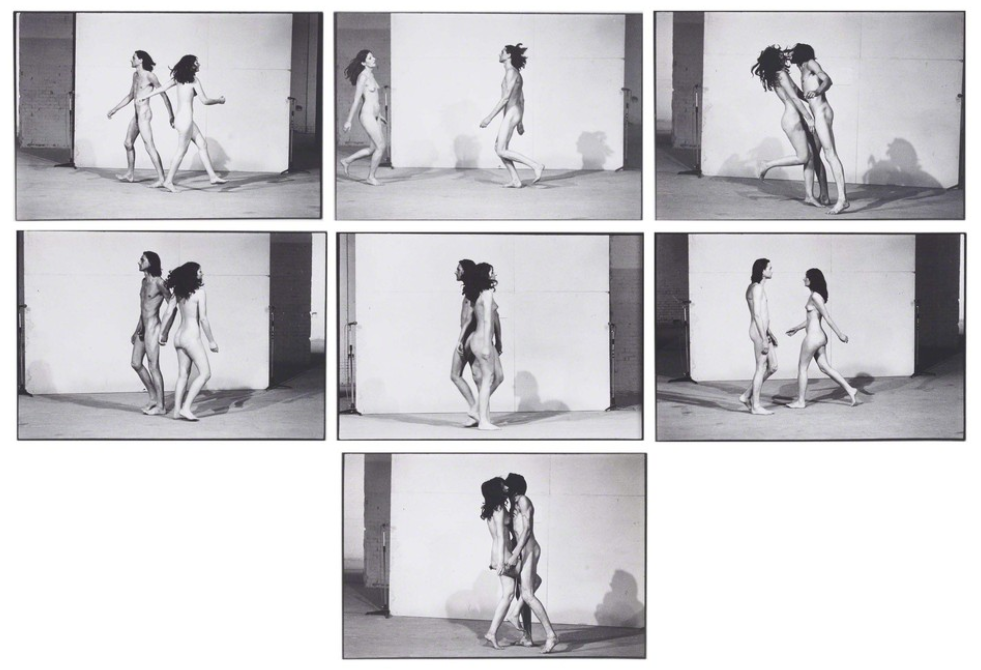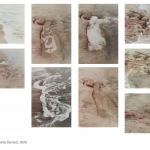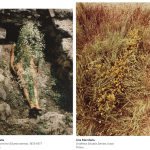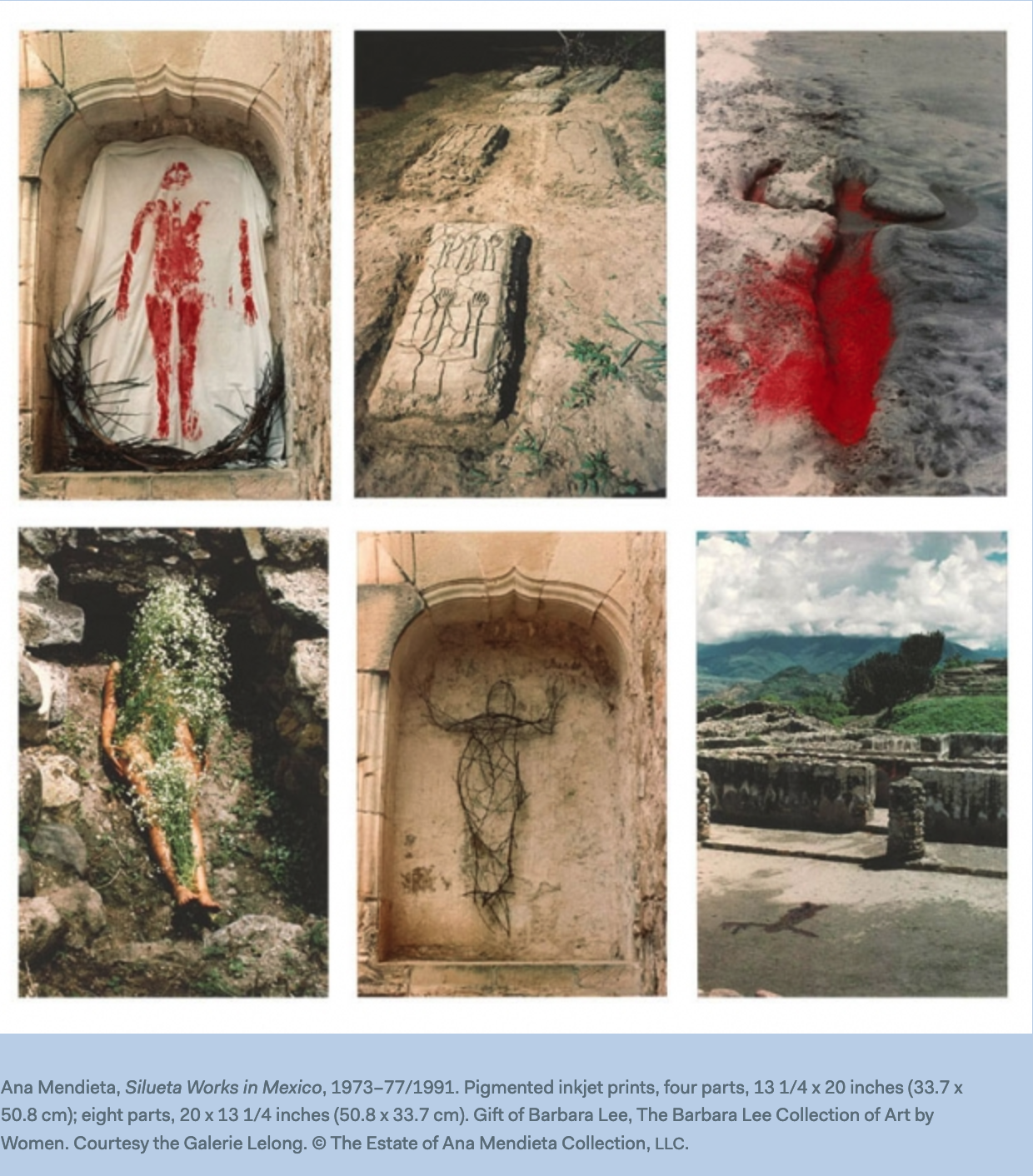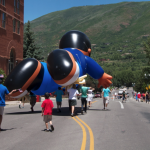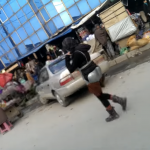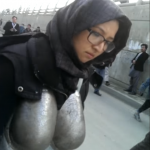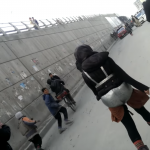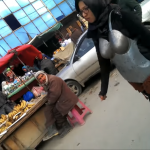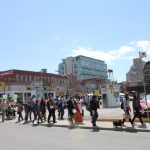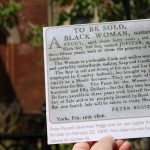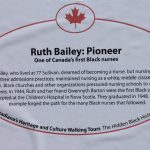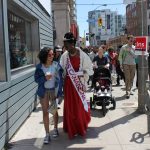“Performed on the 16th of July at the Venice Biennale in 1976 with Ulay. In Relation in Space (1976) they ran into each other repeatedly for an hour – mixing male and female energy into the third component called “that self.”” (credit)
Category Archives: Body Image
Ana Mendieta, Silueta Series (1973-78)
“The “Siluetas” comprise more than 200 earth-body works that saw the artist burn, carve, and mold her silhouette into the landscapes of Iowa and Mexico. The sculptures made tangible Mendieta’s belief of the earth as goddess, rooted in Afro-Cuban Santería and the indigenous Taíno practices of her homeland. Exiled from Cuba at a young age, Mendieta said that she was “overwhelmed by the feeling of having been cast from the womb (nature).” Seeking a way to, in her words, “return to the maternal source,” she used her body to commune with sand, ice, and mud, among other natural media, as a way to “become one with the earth.”
Yet these works resist easy categorization in form or theme. The “Siluetas” are not self-portraits or performance pieces, except perhaps to the few who witnessed them. Each piece was subsumed by the earth, meaning photographs are the only remaining traces. Similarly, the thematic complexity of Mendieta’s life and these sculptures resist collapsing into neat categories of nation, diaspora, race, or gender. By using the body as both an image and medium, these aspects of identity are complicated. Mendieta’s earthworks occupy a liminal space between presence and absence, balancing the inevitable politicization of the self while searching for meaning in older, sacred traditions. …
The “Siluetas” were an ongoing, ritualistic relationship between Mendieta and the land. I read each work as a spell, a fragment of an ongoing incantation that was not “the final stage of a ritual but a way and a means of asserting my emotional ties with nature,” as Mendieta once said. She wanted to send “an image made out of smoke into the atmosphere,” so that each work was designed to disappear, to be reclaimed by the force she revered in an effort to come closer to it.” [credit]
“Spanning performance, sculpture, film, and drawing, Ana Mendieta‘s work revolves around the body, nature, and the spiritual connections between them. A Cuban exile, Mendieta came to the United States in 1961, leaving much of her family behind—a traumatic cultural separation that had a huge impact on her art. Her earliest performances, made while studying at the University of Iowa, involved manipulations to her body, often in violent contexts, such as restaged rape or murder scenes. In 1973 she began to visit pre-Columbian sites in Mexico to learn more about native Central American and Caribbean religions. During this time the natural landscape took on increasing importance in her work, invoking a spirit of renewal inspired by nature and the archetype of the feminine.1. Ana Mendieta, quoted in Petra Barreras del Rio and John Perrault, Ana Mendieta: A Retrospective, exh. cat. (New York: New Museum of Contemporary Art, 1988), p. 10.
2. Ana Mendieta, “A Selection of Statements and Notes,” Sulfur (Ypsilanti, Mich.) no. 22 (1988), p. 70.” [credit]
Anna Campbell, Saddledrag (2006-)
Specific to the 2008 iteration: “As part of her ongoing performance series Saddledrag, artist Anna Campbell dressed in self-proclaimed “cowboy drag” and pulled a cast-plaster saddle behind her. In her own words, this cowboy without a horse “hopes to critique both the construct of the American cowboys, as well as nostalgia for a romantic past that never existed.” The saddle was fully eroded by the end of the trek, leaving a two-mile double line that encircled the full parade route.”
— Credit: Uchill, Rebecca, editor. On Procession, Indianapolis Museum of Art, 2009. Page 99.
The parade, overseen by Fritz Haeg and titled East Meets West Interchange Overpass Parade, was sponsored by the Indianapolis Museum of Art and was held on April 26, 2008.
Dave McKenzie, Dave (2010)
Dave McKenzie (1977-)
“Your retrospective features a parade-sized balloon which was previously used in another performance at the Aspen Art Museum. Could you talk about the object in this iteration? Particularly your ideas around metaphor and repetition?
The balloon was originally created for a July 4th parade in Aspen, Colorado, and was based on a video that I made called Watch the Sky. In Watch the Sky, I used television footage of the Macy’s Day Parade and then superimposed a caricature of myself over top of a character named Little Bill (a Bill Cosby character). What ended up in Aspen was a Frankenstein version of this image from Watch the Sky. Aspen is not a town known for its racial diversity, so when viewers of the parade saw this Black figure—one they could not identify and had no particular reference or even affinity towards—they tended to fill in the gaps by associating this Black male with any popular Black male they could conjure up. Obama, Lebron [James], etc. In the [retrospective], I think the balloon will have a number of functions and refer to a number of things—it is beautiful and ugly, full and empty, present and absent. It’s my body, maybe, but certainly like my body it is already historical and preconceived. Still, if I had to put my figure on one thing it points to and addresses it would be breath.” [credit]
Adrian Piper, I am the Locus #2 (1975)
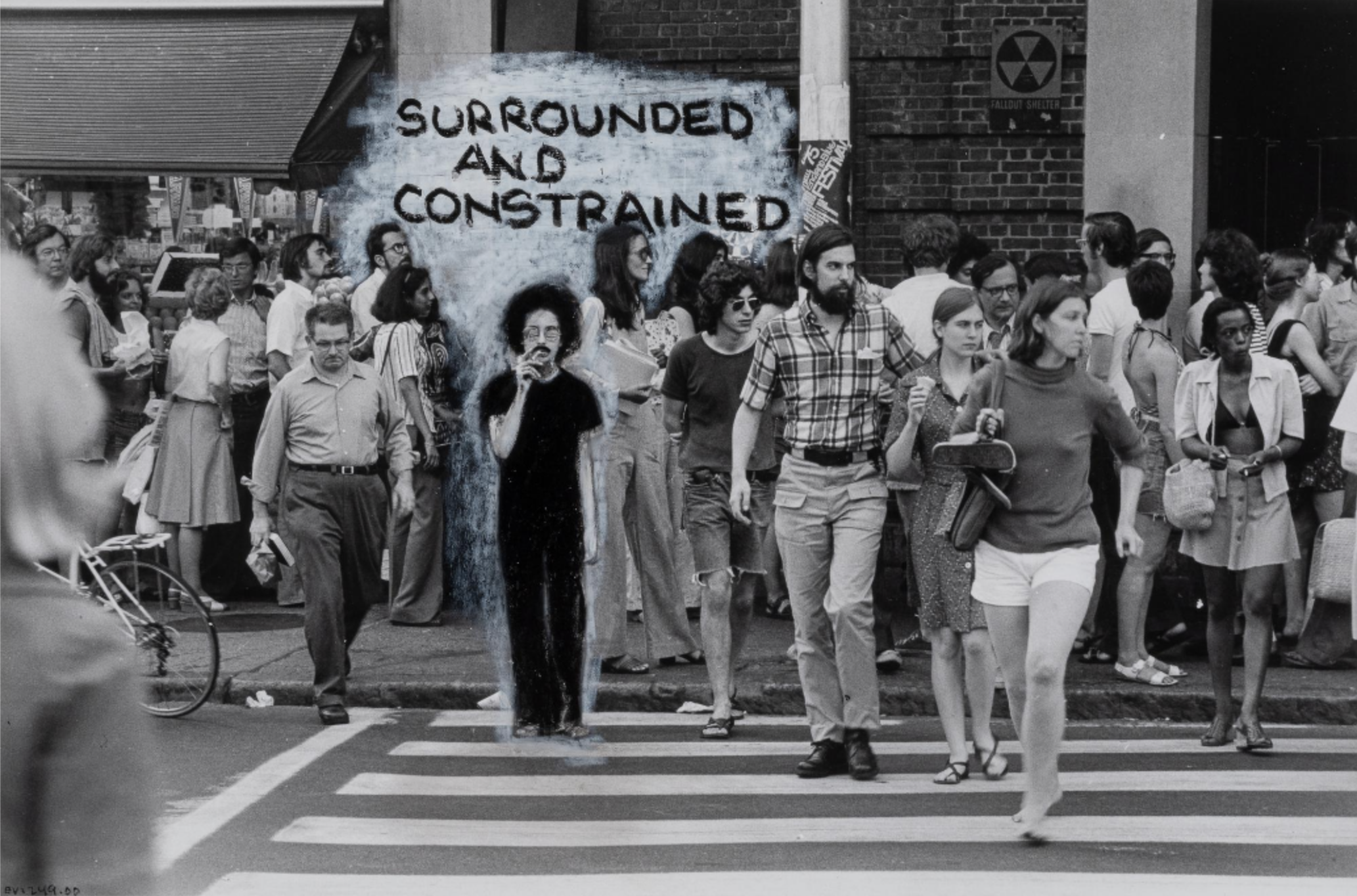
[credit]
I am the Locus (#2)
DimensionsSheet: 8 x 10 in. (20.3 x 25.4 cm)
“The series of five hand-worked photographs that comprise The Mythic Being: I am the Locus conveys Piper performing a consciousness of otherness on a walk through Harvard Square in Cambridge, Massachusetts. An American-born artist of mixed racial background, Piper has articulated questions about the politics of racial identity in many ways throughout her work as an artist and philosopher. In 1973, Piper created an alter ego, the Mythic Being, who became the basis of a pioneering series of performances and photo-based works. For this 1975 Mythic Being performance, she sported large sunglasses, an Afro wig and mustache—chosen to blend in with the mid-seventies urban environment, and dressed in men’s clothing. This simple costume enabled her to appear inconspicuously as a black man to an unknowing public. In these photographs we can perceive the indifference of the crowd in Harvard Square to Piper’s performance: people brush shoulders with her, or look in the opposite direction.
Her subsequent intervention into the photographs with oil crayon and text helps to dramatize the scenes, and to express the tension between the artist’s inner experience and the invisibility of her Mythic Being performance to its live audience. Drawing directly on the photographic prints prevents the images from being seen as straightforward documentation of a performative event. Instead, by the final sequential image, most of the other people and surroundings have been obliterated by drawing, which parallels the text’s shift from philosophical meditation (“I am the locus…”) to existential shove (“Get out of my way…”). Piper intended for these photographs to be made into posters; she did not initially intend for these preparatory images to be treated as works of art unto themselves.” [credit]
—
“In 1973 Adrian Piper pasted a mustache on her face, put on an Afro wig, and donned round, wire-rimmed shades.
Dressed and acting like a man, she went out into the streets.
Muttering passages she had memorized from her journal, the artist was startling and weird, challenging passersby to classify her through the lens of their own preconceptions about race, gender, and class.

Who was this light-skinned black man, going on and on about how his mother bought too many cookies. Was he crazy? Was he dangerous? Why was he being followed by a film crew?
These street actions formed the basis of The Mythic Being, an influential work of performance art that helped establish Piper’s reputation as provocateur and philosopher.
At a time when Conceptual and Minimal art were mostly male domains that pushed to reduce art to idea and essence, Piper pushed back with confrontational work that brought social and political issues to center stage. And at a time when most performances were barely documented, Piper announced her project in ads in the Village Voice, arranged for it to be filmed by Australian artist Peter Kennedy, and created works on paper dominated by her aggressive alter-ego.
In the catalogue for “Radical Presence: Black Performance in Contemporary Art,” currently at NYU’s Grey Art Gallery, curator Naomi Beckwith describes Mythic Being as “a seminal work of self-fashioning that both posited and critiqued models of gender and racial subjectivity.”

Footage from Mythic Being, borrowed from Kennedy, had been playing on a monitor in the Grey’s galleries until this week—when Piper requested the work be removed. The monitor was turned off and the gallery posted a note to viewers on top.

It explained that the artist had articulated her reasons in correspondence with Valerie Cassel Oliver, the show’s curator, which reads in part:
“I appreciate your intentions. Perhaps a more effective way to ‘celebrate [me], [my] work and [my] contributions to not only the art world at large, but also a generation of black artists working in performance,’ might be to curate multi-ethnic exhibitions that give American audiences the rare opportunity to measure directly the groundbreaking achievements of African American artists against those of their peers in ‘the art world at large.’”
The note responds with a statement of Cassel Oliver’s from the catalogue, arguing that the show’s mission is to resist “reductive conclusions about blackness: what it is or what it ain’t. What is clear is that it exists and has shaped and been shaped by experiences. The artists in this exhibition have defied the ‘shadow’ of marginalization and have challenged both the establishment and at times their own communities.”

In response to Piper’s request, Cassel Oliver added: “It is clear however, that some experiences are hard to transcend and that stigmas about blackness remain not only in the public’s consciousness, but also in the consciousness of artists themselves. It is my sincere hope that exhibitions such as Radical Presence can one day prove a conceptual game-changer.”
In depriving students and the larger public from seeing her work at the Grey, the artist, who currently lives in Berlin and runs a foundation dedicated to art, philosophy, and yoga, has chosen to make a larger point about marginalization and otherness, themes that have dominated her work throughout her career.
The question is whether separate exhibitions are still needed to tell the stories that were left out and continue to be absent from conventional tellings of art history, or whether creating these separate spaces amounts to a kind of ghettoization that prevents the artwork from being considered on the larger stage.

These issues are hardly confined to race, of course—curators of exhibitions on gender, nationality, and other aspects of identity routinely encounter artists who decline to participate because they don’t want to be considered in the context of “women artists,” “Jewish artists,” and so on. So, sometimes, do our contributors and photo editor when we run stories on these issues.
The organizers of “Jew York,” a show at Zach Feuer and Untitled galleries in New York last summer, were turned down by several artists who didn’t want to appear under such a rubric. Luis Camnitzer, a German-born Uruguayan artist, was so conflicted that he couldn’t decide whether to recuse himself or contribute a piece. So he sent a letter describing his conundrum, which became part of the show. It read in part: “Do I refuse the invitation on the grounds of feeling that it is an artificial and anecdotal grouping irrelevant to the work of most artists invited and therefore tinged by an aroma of weird fundamentalism? Or do I have to accept on the grounds of my need not to deny my Jewish connections bound by my ethical debt and beliefs? Maybe not totally pleasing to everybody, this letter tries to be my compromise.”

When “Radical Presence” opened at the Contemporary Arts Museum, Houston, last year, it also included five works from Piper’s 1975 series I am the Locus, collaged and painted Polaroids on which images of Piper as the Mythic Being are inserted into scenes of a crowded street. The text gets bigger as the figure approaches the viewer, culminating in the warning “Get Out of My Way, Asshole.” The works, owned by the Smart Museum at the University of Chicago, were deemed too fragile to travel to New York.
Part II of the New York version of “Radical Presence” opens at the Studio Museum in Harlem on November 14. It doesn’t include any works by Piper. The show is scheduled to travel to the Walker Art Center in Minneapolis next year.” [credit]
Yasmeen Sabri, Walk a Mile in her Veil (2016)
“Walk a Mile in her Veil is an introspection of Arab identity through the lens of the veil and its user, inviting visitors to try on the veil and understand first-hand the cultural, social, and feminist motives behind it.” [credit]
Kubra Khademi, Armor (2015)
- Kubra Khademi, Armor (2015)
- Kubra Khademi, Armor (2015)
- Kubra Khademi, Armor (2015)
- Kubra Khademi, Armor (2015)
Images screen captured from video documentation
“Since 2015, the Afghan artist Kubra Khademi has been based in Paris. Khademi moved to France due to the violence she faced in the wake of her 2015 performance Armor, for which she walked through a busy area in central Kabul dressed in custom-made metal armor: an artistic gesture meant to highlight how women are sexually and verbally harassed in public spaces. After studying fine arts at the University of Kabul, and later at the University of Beaconhouse in Lahore, Khademi committed herself to the continuous reflection of the condition of women’s lives in Afghanistan. Her work spans performance, painting, and drawing. In the last year, Khademi finished a series of large-scale paintings and drawings. They are inspired by the way Afghan women express their sexuality through a coded and subversive poetic language that remains unrecognizable to men. The art critic and editor Philomena Epps met Khademi for V/A and spoke to her about the assertive and unapologetic presence of women in her work as a form of resistance against the patriarchal order. Their conversation is published here as a contribution to our current thematic focus “disappearing.”

PHILOMENA EPPS: I wanted to begin our conversation with the concept of “disappearing.” I’m thinking about how your work might be framed as the antithesis to this theme, because it insists on the presence of women. There is an insistence on the body, on being seen, and a profound emphasis on the female subjectivity, all as a form of resistance. Could you, as an artist and as a woman, speak about this refusal to disappear in relation to physical presence as a political act?
KUBRA KHADEMI: Much of my work comes from my personal life experience and stories about the women I know. I talk about them; I talk about myself, about my mother, about my sisters. Someone once asked me, “Where are the men in your family?” This question was asked out of curiosity, but I received it very violently; I was disturbed. I thought, “Why are you repeating what my society, where women don’t exist, has done to me? Why should I reproduce what it has done?” My work is becoming more and more feminine. These stories can’t be told another way. It’s all about liberty; it’s about saying whatever I want to say.
PE: Your artistic practice has been engaged with the condition of women’s lives and questions of violence and repression. Both issues are historical as well as deeply personal to you.
KK It reflects the heart of popular Afghan society: the men are outside, and the women have to be in the kitchen. Women have to serve the soldiers; they have to cook for them. That is how they get their value. Religion plays a big role in serving the patriarchy, or perhaps it is patriarchy that serves religion. And women also practice patriarchy. People tell me that men are also imprisoned by patriarchy, that it is also violent to men, that it tells them they should not be soft, they should not be feminine – of course, but I don’t care. I have five sisters and four brothers. When my father died, my brother took over. If it wasn’t him, it would have been another man: an uncle, a neighbor. This isn’t a theoretical argument – it all comes from my life experience. I’ve grown up in a culture and society where being an artist and a woman is a terrible thing, because art is all about self-expression. When I was a child, my mother took us to bathe in a public, woman-only hammam. It was a very secure and trusting environment; I saw so many free, female bodies. It was there that I saw the adult female sex for the first time. I didn’t understand what I was feeling, but when I got home, I was looking for paper. I was already drawing a lot then, so I took my sketchbook and started drawing what I had just seen: all these female figures. I then hid my drawings. I tore them up and hid them under a carpet because I had this fear. My mum was cleaning and found the drawings a few days later. I was so scared. She got the electric fire and hit me with it. I’ve forgotten the pain of it, but I haven’t forgotten the feeling of guilt she gave me. I hung my head in shame for months; I could not raise it. My mum didn’t buy sketchbooks for me again, and I didn’t draw for a long time. Paper was very expensive anyway. When I draw today and leave expanses of white space, it is such a celebration for me, that I can buy these big sheets of white paper. I draw sexually liberated women, and I also practice leaving all this white space that I wasn’t afforded when I was a child.
PE: It’s interesting that your primal instinct was to record what you were seeing, even when you were so young, because this formative moment ended up shaping the direction of your work as an artist.
KK: I am so happy that there is no guilt anymore. We have to celebrate living without any guilt. The guilt was more painful than that electric fire on my body. I remember so clearly how my head was down for months, the feeling of pain in my neck. I was paralyzed. I could not draw.
PE: The physical toll shame takes on the body is unsettlingly overwhelming.
KK: No one spoke about it. When I came to France in 2015, after twenty-six years, I started talking about these experiences. I tried to re-draw that image from the hammam. I won’t forget it. I put colour on their bodies, and I called it Twenty Years of Sin. When people see that drawing, they do not fully understand what it means to me, neither back then nor now.

PE: I’d like to go back to 2015, to the performance piece Armor that led to you moving to France: you walked through a street in central Kabul, a public place in which you were highly visible, dressed in custom-made metal armor that emphasized your breasts, belly, and bottom. You had made it in response to the violent patriarchal politics of Afghanistan, particularly to how women are sexually assaulted and harassed in public spaces. Could you say more about what motivated the development of that performance, but also how the impact and severity of the performance’s fallout ended with you fleeing the country.
KK: I’m an artist who finds public space very inspiring. It’s fluid and free, the world as my studio. Before Armor, that was how I was working in Afghanistan. But I also come from a world where I should not be present. I have been sexually harassed like millions of other women in Afghanistan. We live in a culture of systemic sexual violence. If you’re raped, it’s your fault. It’s your destiny because you’re a girl. It’s taboo to bring this up. Very few women feel able to talk about it. I find that so disturbing. While I was performing Armor, the number of men around me increased every few seconds. I felt fear but also assured. That was what the performance was about: this is the way it is. I was prepared to be mocked, insulted, laughed at – those are daily things we experience as working, active women. That’s everywhere; I was ready for that. However, my performance was not an image that people saw daily. After I arrived at the end point, where my friend was waiting for me in a taxi, people started jumping on the car. The driver was frightened because he was in danger, so he started driving without looking back. When I turned on my phone the next day, I saw that it was all over the news and social media. My image was shaking the country. I assumed that it soon would be forgotten, but that was naive. It didn’t die down. The performance was presented as a project of the United States against Islam values, as blasphemy, as encouraging female prostitution. The image then started circulating internationally, which made it worse because people in the Western world admired it. It was out of control. The world was in shock; my country was in shock. Once again, local media spoke about it, as I was being criticized for being a spy and a puppet of the United States that wanted to gain the attention of the West. And outsiders perceived my work as activism. That was painful for me. This wasn’t activism; I’m an artist. By the time I moved to France, I was in significant danger. I was lucky I stayed alive. To this day, I still receive messages of hate on Instagram from Afghan people.

PE: I see it as an artistic work. The suit of armor, the costume of war, creates a striking image of protection and aggression, but it is contrasted with this enhancement of the female form, exaggerating the softness and vulnerability of the unclothed body. The act of walking is also reminiscent of female artists who used their body as artistic material in the 1970s. I’m thinking about performances and images made by women such as Valie EXPORT, Marina Abramović, Anna Maria Maiolino. These artists developed revolutionary ways to speak about violence against women, about censorship, or harassment, through a performative language and by provocatively staging feminine vulnerability and endurance in the act of spectacle. Seeing your performance only as a protest piece minimizes the depth of these artistic considerations and intentions. Of course, there are gestures within the work which could be thought of as activism, but it is art.
KK: Seeing it as an activist project implies judgement. It is an art piece. When I was a child, I already used to say, “I am an artist.” That is unbearable for my society. My society wanted to imprison me, make me a wife, a mother, but I wanted freedom. I am unmarried. I do not care about it.
PE: When you moved to France, you continued to put on walking performances. For Kubra & Pedestrian Sign (2016) you walked through Paris in a black dress and high heels with a pedestrian crossing lightbox tied to the top of your head, except the green sign in the box was a female figure. I’m curious about how you found the experience of reclaiming public space in this new European context.
KK: The challenges are different here: the texture and sense of the landscape, the cityscape, the people around me. Public space in France and the Parisian art scene are still very masculine, but in a far more subtle and sophisticated way. No one harasses me in Europe like they do in Afghanistan. I don’t need an armor to walk here. The city is like that blank white page again. That was the first performance I put on in a public space after then one in the Kabul. It was a few months after I arrived. The image of me is almost funny. I was looking into people’s eyes and allowing them to talk to me. Most of the reactions were similar, but one woman screamed at me from the other side of the street, “That is sexist! Skirts are sexist!”

PE: Earlier this year, Galerie Eric Mouchet in Paris presented your solo exhibition From the Two Page Book. The gouache paintings depict a matriarchal society, in which nude women engage in sexual and vulgar acts. I’d like to ask you about the erotic dimension of these paintings. The series draws on the writings of the poet Rumi in a homage to the particular form of language that Afghan women use when they discuss their sexuality.
KK: I have a clear position toward the women in my drawings. This is how I show femininity. These women in my paintings are not nude. To me, they are not naked; they are just bodies. If I was to clothe them, then in what clothes? Which identity? Do I dress them in the clothes I wore in Afghanistan or the European style I wear now? Clothes are dictated by geographical and religious borders. When I was a child, I drew what I saw, and I still see women this way. I chose Rumi to set up a parallel with the dialogue between women I know. All of these drawings come from a feminine universe that exists within Afghan popular culture. It’s fascinating how religion has divided women and men into two specific spaces. What women have constructed in their own space is another world that is poetic and liberated, where they trust one another. Men occupy space in a very brutal way. With my mother and her friends, when they come to talk about things, they are constantly laughing. This doesn’t mean they are happy or naive. They talk a lot about sexuality. If you were to arrive in an Afghan village, you would think, “Oh my god, the women are so repressed here,” but you would be wrong to think they don’t know anything about their sexuality. It comes out in another very beautiful way. We talk about fetishes and sexual fantasies, but it is not rooted in pornography. We talk about sex in a very funny way. When women talk about their sexual experiences, which they do woman to woman, they do not name their husbands. A friend of my mother’s calls her husband “a donkey,” which both mocks him and raises his sexual power. We use a lot of metaphors. This humor is so present in our society, but it is invisible to men. In my paintings, the body of the donkey has been removed, leaving only his sex. We say, “Cut it and keep it under the bed so it can serve you whenever you want,” because we do not want anything else. Men are just useless creatures.

PE: It’s like another dialogue or even a code. Your painted images are another manifestation of this coded language in visual form.
KK: Yes, it’s all about code. When I showed these works to my sister and my mother, we all knew what they were about. It wasn’t anything new. These are daily conversations. It’s fluid among us, we practice it. It was necessary for me to create a feminine universe. There is one work called Frontline (2021): women end up on the frontline very easily. One woman is pregnant, the other woman next to her is shitting. Women are called dirty, yet they have to be pure. The choice of being pregnant doesn’t exist in Afghan culture. I’m navigating between all of these issues. It’s a fight against the history and a system protected by religion. All the images are deliberately huge. These women have to be bigger than men. They are all two meters, and the drawing itself is 6 meters by 2.5 meters.
PE: They dominate the space. They are larger than life. This month, as part of The Enchanted exhibition at the Museum of Modern Art in Paris and an offshoot of the events programmed by Nuit Blanche, you will destroy a series of recent drawings in a public performance. Titled Power and Destruction, these images depict sexually liberated warrior goddesses.
KK: Last year, I made a lot of drawings. It was fascinating to express myself in this way. The medium allows for exploration and imagination. You can create another world, unlike performing in front of the camera. I wanted the drawings to mirror live performance art, and the way it disappears after the event. I also decided to take the power back regarding the destination of my work. I have drawn mythical goddesses inspired by my Afghan origins. They are all extraordinary women. I want to exert my power as an artist as both the creator and destructor of these works. The only person to remain is the artist, who is alive.” [credit]
Amanda Heng, Let’s Walk (1999)
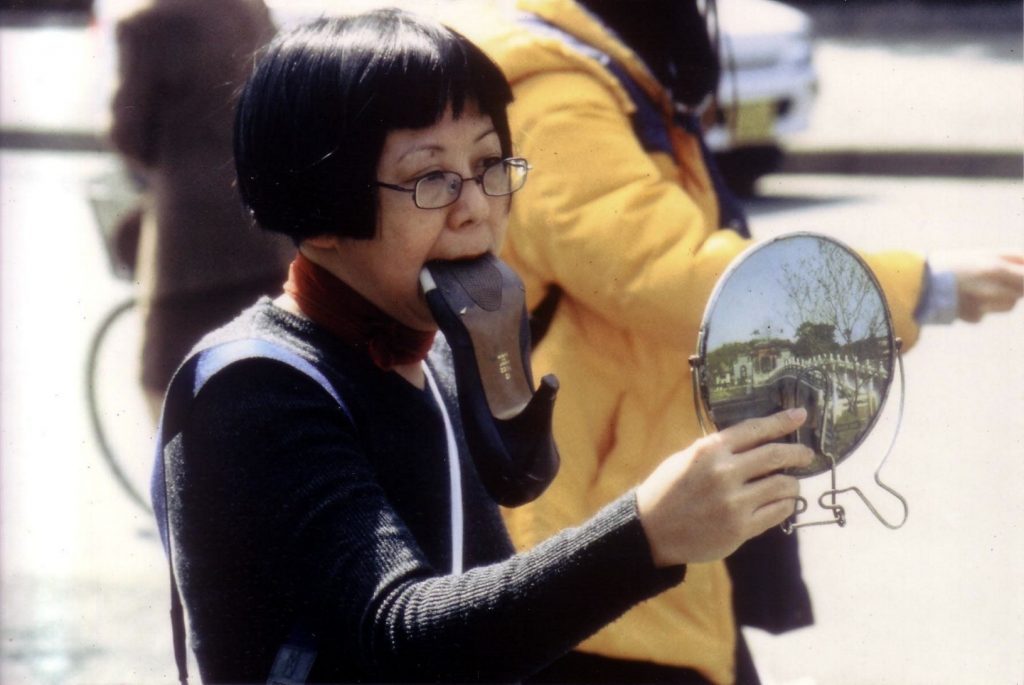
Amanda Heng, Let’s Walk (1999)
“Heng has been a central figure in Singaporean performance art as well as feminist discourse in Singapore since the 1980s.
Her body of ‘walking works’ began in 1999 with “Let’s Walk”. She created the work in response to a range of worrying trends, which continue to echo till this day. In 1997, Asia had been hit hard with a financial crisis. Many people lost their jobs and businesses, but women seemed to be the first to get retrenched. Curiously and disturbingly, the beauty business did especially well at this time, as women were pressured to look better than their natural best. In Heng’s own words, “A lot of Singaporean women were ‘upgrading’ themselves, going to beauty salons, having plastic surgery and so on to keep their jobs. A woman’s looks are still worth more than her abilities.”
Your first “Let’s Walk” performance in 1999 was a response to how working women were turning to beauty and cosmetic treatments to keep their jobs during the 1997 Asian financial crisis. What are your thoughts on female beauty?
I prefer to think that beauty is up to each individual. If you claim to be liberated, don’t let others define what beauty is on your behalf. Have the courage to be different from the norm. If you feel such perceptions needs to change, commit yourself to doing something about it and don’t just complain. We women make up half the population in Singapore, so there’s a lot of good that we can do!” [credit]
Later this piece was reprised in 2018 as part of the M1 Singapore Fringe Festival.
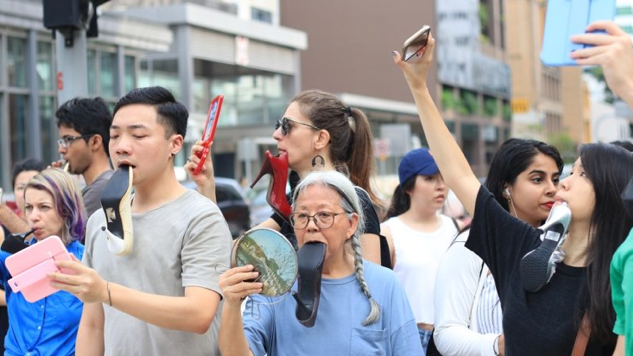
Let’s Walk, 2018 is a public participatory performance by Amanda Heng presented at the M1 Singapore Fringe Festival 2018: Let’s Walk. Image courtesy of Amanda Heng.
Camille Turner, Miss Canadiana Heritage and Culture Walking Tour (2011)
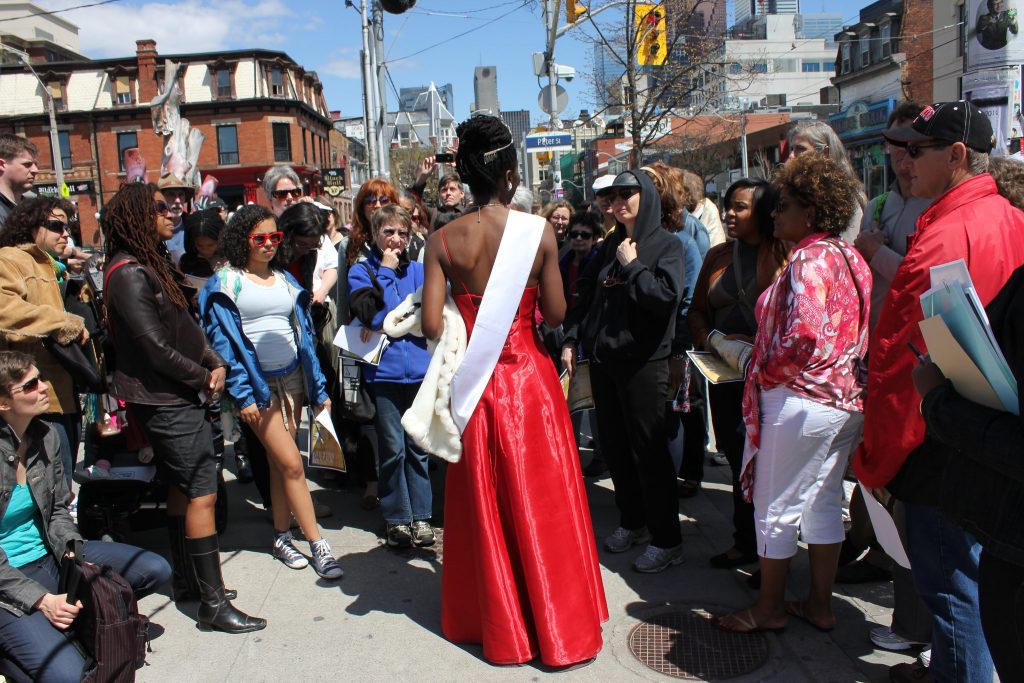
Camille Turner, “Miss Canadiana Heritage and Culture Walking Tour” (2011)
[credit]
“In Miss Canadiana Heritage and Culture Walking Tour, Miss Canadiana acts as a tour guide to the hidden Black histories of Toronto’s Grange neighbourhood. You can View the photo Album here”
- Camille Turner, “Miss Canadiana Heritage and Culture Walking Tour” (2011)
- Camille Turner, “Miss Canadiana Heritage and Culture Walking Tour” (2011)
- Camille Turner, “Miss Canadiana Heritage and Culture Walking Tour” (2011)
- Camille Turner, “Miss Canadiana Heritage and Culture Walking Tour” (2011)
- Camille Turner, “Miss Canadiana Heritage and Culture Walking Tour” (2011)
- Camille Turner, “Miss Canadiana Heritage and Culture Walking Tour” (2011)
““For me, walks really bring awareness to the places that we’re in in a completely different way than any other types of artwork that I’ve seen,” says Toronto artist Camille Turner. “It really makes people see the space in a completely different way, and I think that’s really powerful.”
Turner would know—after creating her soundwalk Hush Harbour, which guides participants on a walk near King and Front Streets in Toronto to reimagine the city’s Black past and to remap Blackness onto the urban landscape, Turner conducted an online survey to get feedback on the piece.
“[The Hush Harbour participants] said they were looking in a new way at the space they walked through every day,” says Turner. “So that way of transforming space is something that walks really do well.”
Currently, Turner is working at one of the formal limits of walking-based art—trying to transform the mobile Hush Harbour walk experience into an installation for the Theatre Centre in Toronto.
“There are limitations to walks as well,” Turner notes, “because people have to come to the place where the walk is made to experience it. I’m trying to uncouple that, so it can be experienced in other places, and travel.”
Turner’s understanding of the power of walking to transform experiences of place started well outside of the art realm.
“I’ve probably gone on lots of different walks, and not necessarily ones that are done by artists,” Turner says, saying one of her favorites was “an amazing walk with Ed Mirvish and Sam the Record Man around Kensington Market” in the 1980s.
Perhaps it is the impact of such experiences that drives Turner to imagine how to make the remapping of space and reclaiming of place available via live, in-person walks, and transform that into something downloadable and reproducible.
For example, Turner has proposed that this year she create a digital version of one of the first art walks she ever did: her Miss Canadiana Heritage and Culture Walking Tour.
Originally performed live in 2011, the piece has Turner, in her Miss Canadiana persona, act as tour guide to hidden Black histories of Toronto’s Grange neighbourhood. (The area is home to the Art Gallery of Ontario and OCAD University, among other canon-building institutions.)
“I am going to do it as a Google Doc so people can actually do it as a self-guided walking tour,” says Turner, who will also remount the work live once more in November 2017.
There may also be a digital or downloadable sound component of the new version of this walk. Turner herself is a great admirer of sonic-walk pioneers like New York’s soundwalk.com, which has created a 9/11 memorial walk with Paul Auster, among other pieces.
“I also really love the sonic walks, because for me, it’s like time travel—you can bring people backward and forward in time,” Turner says. “I use binaural microphones that I put in my ears, so [the recording is] picking up space exactly as I hear it.”
And it’s not just sound technology that is surfacing in Turner’s recent work—in Freedom Tours, a recent collaboration with Cheryl L’Hirondelle for LandMarks2017, Turner organized boat tours around the Thousand Islands area to provide a different kind of mobile storytelling experience. (Turner and L’Hirondelle are also working together on a walk for June 24 in Rouge National Park near Toronto as part of LandMarks2017.)
Ultimately, it is the ability to intervene in history that draws Turner to walking in her practice—especially when it comes to surfacing Black and African experience in spaces constructed by the canon, and by society at large, to read as white or European. (Meetings of past and present Black history also come to the fore in some of Turner’s works in other media, like the combination of contemporary photo-portraiture and historical “runaway slave” notice texts in her series Wanted, co-created with Camal Pirbhai and opening in “Every. Now. Then.” at the Art Gallery of Ontario on June 28.)
“Walking can be an intervention into history—it’s a way of practicing public history, and in bypassing the institutions that create history, you can be a producer of history,” says Turner. “I really like these kinds of ways of working, of intervening in space and in the way that power is kind of written itself in the land.” [credit]
Yoko Ono, Film No. 4 (Bottoms), 1966
“The film combines men and women almost equally, capturing their exposed buttocks in a tight frame that results in quadrants of flesh, hence the “No. 4″ of the title. Since the telltale part of the human anatomy is facing away from the camera, the viewer is left to parse out identity based on subtle signs of difference, including hair, fat, and shape. Motion comes into play because the subjects are shot while walking, a fact that can be guessed by carefully watching the film and that is proved in a production still, which illustrates the simple rotating contraption on which they moved in place.”
Credit: Waxman, Lori. Keep Walking Intently: The Ambulatory Art of the Surrealists, the Situationist International, and Fluxus. Sternberg Press, 2017. Page 261.
